 Click To Return To Main Page |
 |
||||||||
 News |
 Eco-Journalists |
 Articles |
 Games |
 Links |
 Facts 'n Fun |
 Email Us |
 About Us |
 Guestbook |
|
|
What is Oil...and how much is left?
Millions of years ago, when the dinosaurs were around, most of the animals lived in the ocean. When they died, their bodies sank to the bottom of the ocean, and got covered with mud. The mud hardened, and turned into rock. The heat and the pressure turned all of the dead plants and bodies into crude oil. 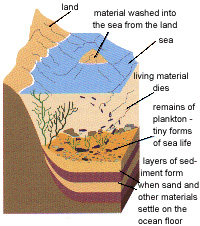
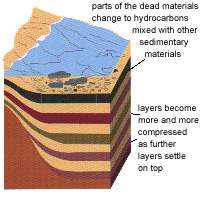
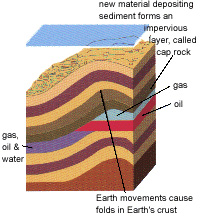
Sometimes, the oil was mixed with sea water. As you know, oil floats on water, and the water sinks. The layer of rock above the oil sometimes had spaces inbetween its particles. This is called a permeable or porous rock and, like a sponge, it sucks up some of the oil. When the rocks aren't porous, the oil is trapped underneath. Geologists (people who study rocks) can often tell where the oil is trapped. 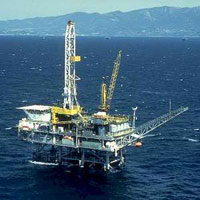 Oil companies can drill down through the solid rocks where the oil is trapped underneath, and get the oil out, using big pipes. They then turn it into products that we can use like petrol and plastic.
Oil companies can drill down through the solid rocks where the oil is trapped underneath, and get the oil out, using big pipes. They then turn it into products that we can use like petrol and plastic.
However, this oil took millions of years to make, and yet we are using nearly 12 billion litres of oil a day.....when will we run out? Well, no one is sure. But they do know that we are about to reach 'peak production'. That means that it's harder and harder to find oil reserves. 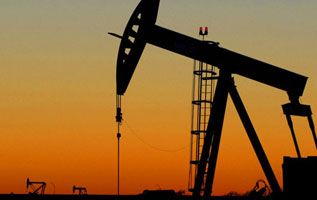 Some say that's estimated that the amount left of this oil will only last us 50 years! We are literally burning this precious resource! We need to start relying on renewable sources like wind power, solar power and new hydrogen technology right now.
Some say that's estimated that the amount left of this oil will only last us 50 years! We are literally burning this precious resource! We need to start relying on renewable sources like wind power, solar power and new hydrogen technology right now.
Links: www.abc.net.au/science/crude www.bbc.co.uk/scotland/education/bitesize/standard/chemistry/materialsfromoil/ http://oceanservice.noaa.gov/education/stories/oilymess/supp_primer.html Photos from: www.edmunds.com Glasgow Marine Technology Centre: www.eng.gla.ac.uk Diagrams from: www.columbia.edu/~ari2102/Oil%20Formation/Oil%20Formation2.html (a great explanation of how they find oil) |